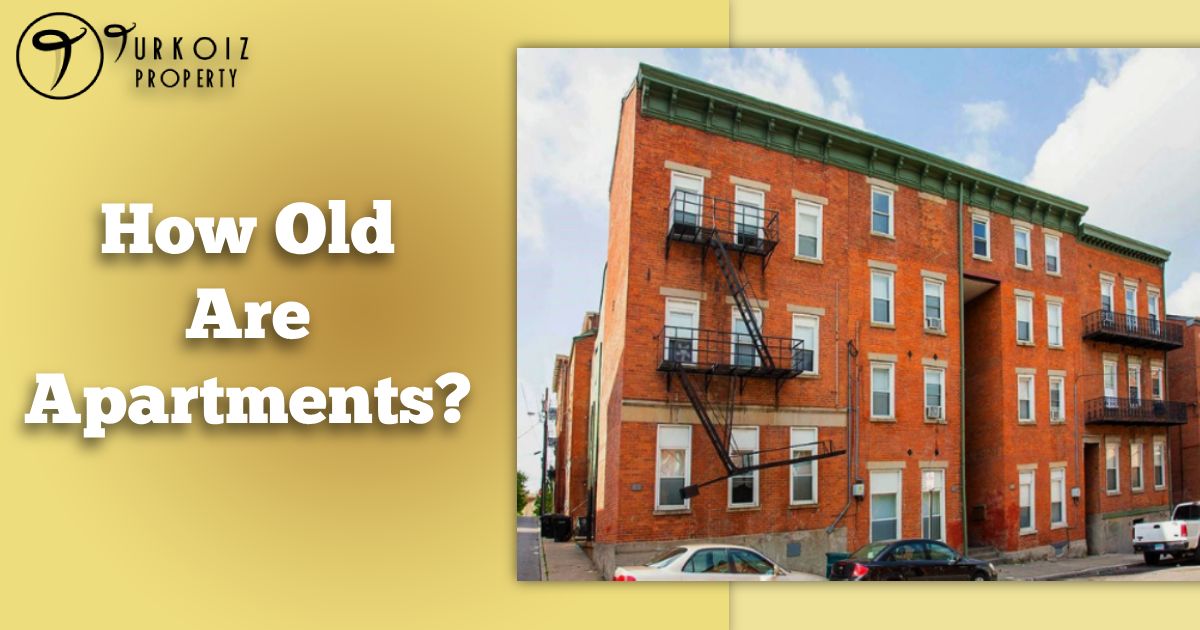When renting or purchasing an apartment, the age of the building is an important factor to consider.
The construction era and architectural history reveal key details about maintenance, amenities, and the overall living experience.
This article explores how old are apartments, delves into the historical development of apartments, and discusses the implications of vintage vs newer buildings.
How Old Are Apartments?
The age of an apartment refers to the year or era when the building was first constructed and opened for residential habitation. The initial apartment complex construction dates serve as the basis for calculating apartment age.

From sprawling garden-style complexes built in the 1950s to pre-war buildings erected in the 1920s, understanding when an apartment originated provides insight into its history, architecture, and maintenance needs.
Several key indicators are used to determine the approximate age of apartment buildings:
- Construction documents often specify the year an apartment complex broke ground and opened its doors.
- Architectural style and structural design reflect popular trends during the era such as Art Deco details in early 20th century apartments.
- Listing records, tax documents, and title abstracts may provide the year the building was completed.
- Historical records from the city or local preservation societies can offer context on periods of development.
While renovations and upgrades may alter interior finishes, knowing the foundational apartment age and history itself is crucial.
Historical Development of Apartments
Apartment-style housing has existed for centuries, with early origins dating back to ancient Rome. However, apartments, as we know them today, emerged as a popular housing type in the 19th century as urban populations grew.
1800s Rise of Urban Apartments
Major East Coast cities like New York and Boston saw the earliest apartments built in grand Victorian brownstone rowhouses during the mid to late 1800s. These urban multifamily homes exemplified early apartment architecture.
Early 20th Century Expansion
Apartment construction accelerated into the early 1900s. Buildings from this era exhibit historic architectural styles like Renaissance Revival and Art Nouveau, with decorative stonework and arched windows.
Mid-Century Postwar Apartment Boom
The 1950s and 1960s experienced a huge apartment boom to meet surging urban housing demand, ushering in minimalist brick vintage apartment buildings and suburban garden apartments.
Late Century & Millennial Trends
From the angular concrete designs of the 1970s to the glass curtain-walled towers of the 2000s, apartment styles continued evolving with the times, leading to today’s sleek modern luxury buildings.
Examining the historical development of apartments provides context on the evolution of form and function when evaluating the creation date of apartments.
Types of Apartment Buildings
The age and architecture of apartments can vary tremendously. Some distinct apartment types include:
Prewar Buildings
Prewar apartments built in the early 1900s often have ornate masonry and distinctive stylistic flourishes from movements like Art Deco. These historic apartment buildings boast sturdy original construction but require retrofitting for modern amenities.
Mid-Century Brick Buildings
Mid-century apartment buildings from the 1950s-60s typically feature simple boxy brick exteriors and open floor plans. While plainer in style, these buildings contain quality construction.
Garden-Style Apartments
Developed in the 1950s and 60s, garden-style apartments sprawl horizontally in multiple low-rise buildings with shared outdoor greenspace. They evoke a more suburban feel.
High-Rises
Modern luxury high-rises first emerged in the 1970s and now dominate skylines. Newer tall towers boast full amenity packages but often command premium pricing.
Identifying the architectural style and layout provides clues into the apartment construction era.
Factors Affecting Apartment Age
While the initial construction year determines age, other factors can impact an apartment’s apparent age:
- Renovations and remodeling updates can make interiors seem newer if finishes are replaced over time.
- Ongoing proper maintenance keeps infrastructure in good shape, reducing signs of aging.
- Restoration efforts preserve historic architectural details to showcase the age of older buildings.
- Neglected deferred maintenance accelerates deterioration, making buildings appear older than their true age.
So while the core building itself possesses a defined construction age, the apartment complex’s year built can seem ambiguous depending on care and investments made over the decades.
If you are interested, also read about how long you can live in an apartment!
Conclusion:
The age and origins of apartments provide revealing insights and impact livability factors from layout to maintenance.
By researching the initial construction date, studying the hallmarks of the architectural era, and understanding the impacts of ongoing upkeep, residents and real estate investors can make informed decisions factoring in apartment age and history.
Whether seeking vintage charm or modern luxury, considering the era and development of the building itself ensures alignment with your priorities when evaluating how old are apartments.
